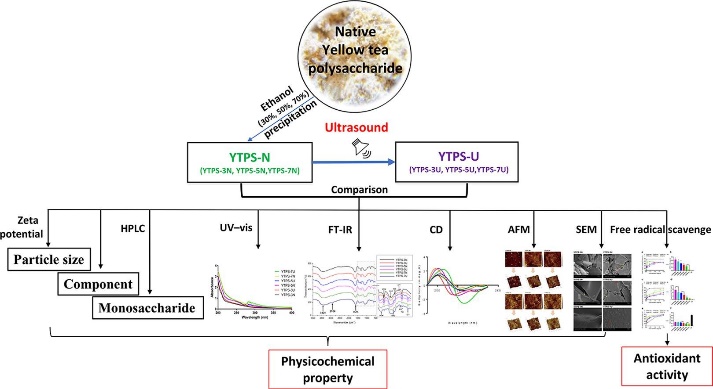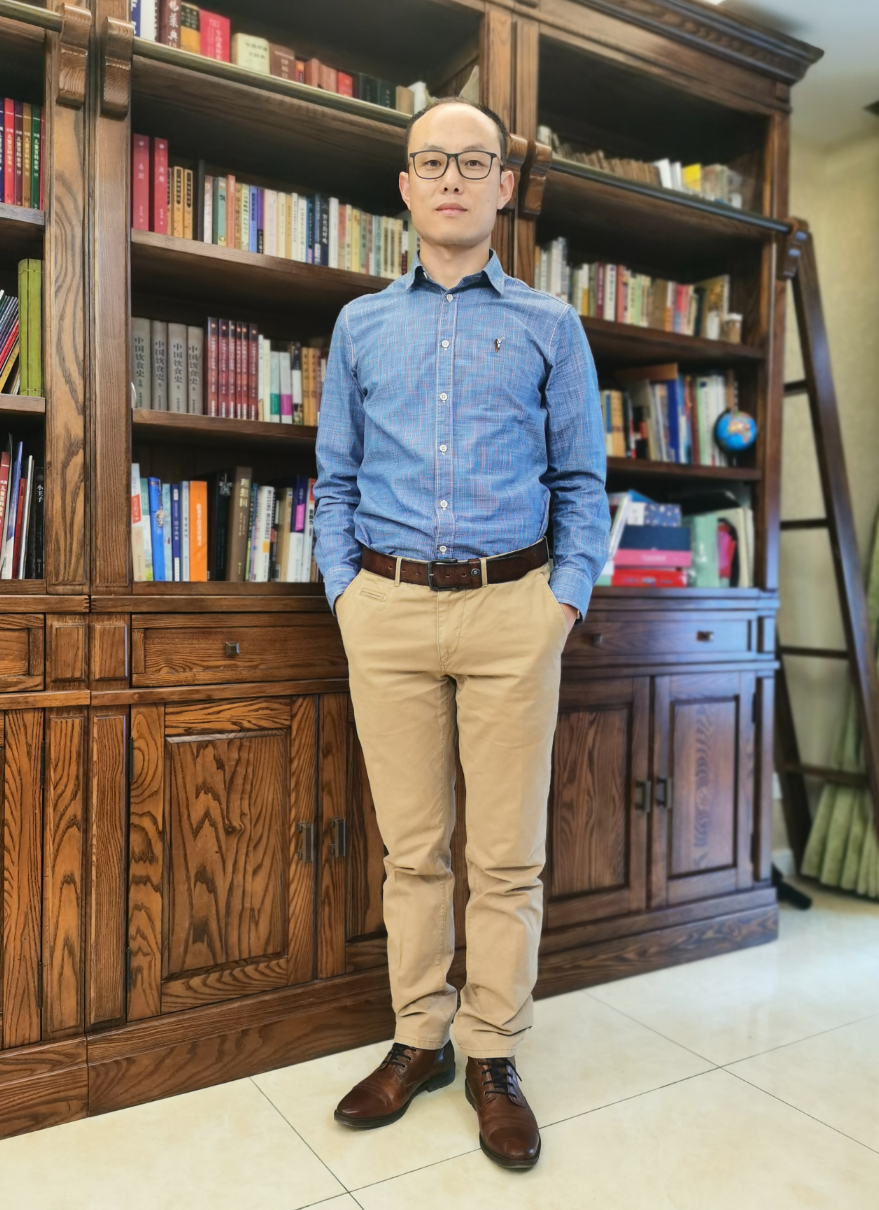Dr.Hausong Wang, from School of Biology and Food Engineering, recently published a research paper in the International renowned journal
Dr. Haisong WANG from the School of Biology and Food Engineering recently published a research paper in the journal of ULTRASONICS SONOCHEMISTRY (Impact Factor: 6.513) with the title of “Ultrasound irradiation alters the spatial structure and improves the antioxidant activity of the yellow tea polysaccharide”. In this paper, Dr. WANG was the first and corresponding author, and Changshu Institute of Technology was the first completion unit. The study investigated the impact of ultrasound irradiation on the structural characteristics and antioxidant properties of yellow tea polysaccharides with different molecular weights. It was found that ultrasound irradiation altered the spatial structure of yellow tea polysaccharides, including the molecular weight, particle size and morphology, which can enhance its antioxidant activity.
Thesis link: https://doi.org/10.1016/j.ultsonch.2020.105355
Paper Title:Ultrasound irradiation alters the spatial structure and improves the antioxidant activity of the yellow tea polysaccharide
Journal:ULTRASONICS SONOCHEMISTRY
Abstract:
In this study, the impact of ultrasound irradiation on the structural characteristics and antioxidant properties of yellow tea polysaccharides with different molecular weights (Mw) were investigated. Native yellow tea polysaccharide containing YTPS-3N, YTPS-5N and YTPS-7N were prepared through precipitation with ethanol at various concentrations of 30%, 50%, and 70%, respectively, and irradiated with high intensity ultrasound (20 kHz) for 55 min to yield yellow tea polysaccharide including YTPS-3U, YTPS-5U and YTPS-7U. The molecular weight (Mw) of YTPS-3N (from 37.7 to 15.1 kDa) and YTPS-5N (from 14.6 to 5.2 kDa) sharply decreased upon ultrasound irradiation, coincidentally particle size (Zavg) was also significantly reduced for YTPS-3N (40%), YTPS-5N (48%) and YTPS-7N (54%). The high-performance liquid chromatography and Fourier transform-infrared spectroscopy analysis revealed a partial degradation of native yellow tea polysaccharide treated with ultrasound, though the monosaccharide composition was not altered. Furthermore, changes in morphology and the breakdown of native yellow tea polysaccharide upon irradiation was confirmed with the circular dichroism spectrum, atomic force and scanning electron microscopy. As a consequence, irradiation of yellow tea polysaccharide increased free radical scavenging activity with YTPS-7U exhibiting the highest levels of 2, 2-diphenyl- 1-picrylhydrazyl free radical, superoxide and hydroxyl radicals scavenging activity. These results suggest that the alteration of the spatial structure of yellow tea polysaccharide can enhance its antioxidant activity which is an important property for functional foods or medicines.
Graphical abstract

Self-introduction

Dr. Haisong WANG is now working in the Department of Food Science at School of Biology and Food Engineering in Changshu Institute of Technology (China). He obtained a PhD degree in Food Nutrition and Safety from Jiangnan University (China) in 2015. Then he started a postdoctoral research work at the State Key Laboratory of Tea Plant Biology and Utilization in Anhui Agricultural University (China) on the effect of tea on human health with particular focus on the extraction of functional components from tea and their bio-activates study. In 2018, He got a full scholarship from China Scholarship Council (CSC) and worked together with Prof. Tom Van de Wiele as a visiting scholar at Ghent University (Belgium) for one year. The core expertise of his research group is the creation and application of enabling in vitro technologies that mimic the human gut microenvironments to understanding the regulation of special food components on human gut microbiota. The research of Dr. Haisong WANG has resulted in a scientific output of more than 20 peer-reviewed international publications.
